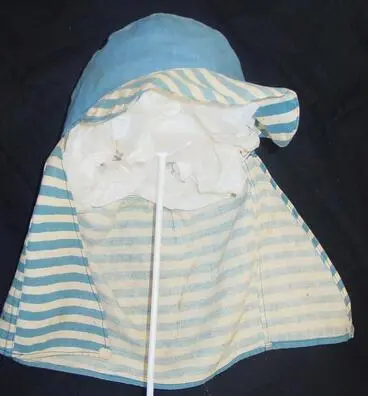Sir Edmund Hillary and Tenzing Norgay
A DigitalNZ Story by DigitalNZ
On 29 May 1953 Sir Edmund Hillary and Tenzing Norgay reached the summit of Mt Everest.
HILLARY AND TENZING REACH THE SUMMIT OF MT EVEREST
On 29 May 1953 a beekeeper from New Zealand, Sir Edmund Hillary, and Nepalese Sherpa, Tenzing Norgay, reached the summit of Mt Everest — the world's highest mountain peak.
Edmund Hillary (1919-2008)
Edmund Hillary's first major climb was up Mt Ollivier (1,933 metres) in the Southern Alps in 1940. After the war he was learnt mountaineering techniques from Harry Ayres, who guided him up Aoraki/Mt Cook, Mt Tasman and Mt Dampier during the late 1940s. In 1950 Hillary travelled to Europe to climb the Alps, before being invited to climb in the Himalayas with British teams in 1951 and 1952. He returned in 1953 to join John Hunt's British Everest Expedition with another New Zealander, George Lowe.
Tenzing Norgay (1914-1986)
The 1953 climb was Tenzing Norgay's sixth climb on Mt Everest, as part of British and Swiss expeditions. His first was in 1935 when he was 20 years old, and his most recent was in 1952 with a Swiss team who attempted to climb Everest from the Nepalese side. Norgay was one of 20 Sherpa guides invited to be part of the 400-strong Hunt expedition in 1953.
Mt Everest
Manatū Taonga, the Ministry for Culture and Heritage
As part of Hunt's team, Norgay and Hillary were chosen to begin the ascent on 28 May. They camped overnight 8,500 metres up the mountain, completing the final ascent to the summit the next morning. They spent about 15 minutes at the top, taking photographs but only one at the actual summit of Sherpa Tenzing posing with his ice axe.
Everest expedition, 1953.
Auckland War Memorial Museum Tāmaki Paenga Hira
Camp 111 at the top of the icefall, Nepal, 1953.
Auckland War Memorial Museum Tāmaki Paenga Hira
Edmund Hillary in Nepal, 1953.
Auckland War Memorial Museum Tāmaki Paenga Hira
Sir Edmund Hillary and Tenzing Norgay in climbing gear, 1953.
Auckland War Memorial Museum Tāmaki Paenga Hira
Edmund Hillary and Tenzing Norgay at 27,900 feet, (8,504 m).
Auckland War Memorial Museum Tāmaki Paenga Hira
Stretched nylon rope used by Sir Edmund Hillary in his ascent of Everest in late May 1953.
Canterbury Museum
Cap for oxygen mask worn by Edmund Hillary on the ascent of Everest, 1953.
Canterbury Museum
Sunhat worn by Hillary when he and Tenzing made the first successful ascent of Mt Everest on 29 May 1953.
Canterbury Museum
Ice axe used by Sir Edmund Hillary on first ascent of Everest, 29 May 1953.
Auckland War Memorial Museum Tāmaki Paenga Hira
Edmund Hillary, back at camp after reaching the summit, 1953.
Auckland War Memorial Museum Tāmaki Paenga Hira
Their achievement, as part of the British Everest Expedition' took place four days before the coronation of Queen Elizabeth II and was celebrated across the Commonwealth. Hillary was knighted by the new Queen before he had even come down from the mountains.
In July the team arrived in Britain where they became the subject of media frenzy.
Hillary, Hunt and Norgay (centre) arrive in London from Everest, 3 July 1953.
Auckland War Memorial Museum Tāmaki Paenga Hira
Edmund Hillary returned to New Zealand in August 1953 as a national hero.
Edmund Hillary and George Lowe arrive home from Everest to a spontaneous welcome.
NZ On Screen
Edmund Hillary, 18 August 1953. Auckland Star photo.
Auckland War Memorial Museum Tāmaki Paenga Hira
Sculpture of Sir Edmund Hillary by Ophelia Gordon-Bell, 1955.
Museum of New Zealand Te Papa Tongarewa
Hillary went on to lead the New Zealand section of a British trans-Antarctic expedition in 1957/1958. He returned to Nepal in the 1960s to help build schools and hospitals for the Sherpas and local communities. In 1978 he led an expedition up the Ganges River and six years later became New Zealand's High Commissioner to India.
Norgay continued to guide expeditions in the Himalayas setting up a company, Tenzing Norgay Adventures in 1978. He received honours from Nepal, Britain and India for his achievements.
Hillary and Norgay inspired a new generation of climbers including their own sons, Peter Hillary and Jamling Tenzing Norgay, who climbed Everest in 2003 on the 50th anniversary of their fathers' climb.

![[Sir Edmund Hillary - Everest Expedition. Copies of ?Times? photos] Image: [Sir Edmund Hillary - Everest Expedition. Copies of ?Times? photos]](https://thumbnailer.digitalnz.org/?resize=770x&src=https%3A%2F%2Fcollection-api.aucklandmuseum.com%2Frecords%2Fimages%2Fmedium%2F544143%2F54b8c65ce8a3ca44e6aab8b698558d9b2733b7c7.jpg&resize=368%253E)
![[Camp 111 at the top of the icefall, Nepal. Sir Edmund Hillary at left, John Hunt, centre, in braces] Image: [Camp 111 at the top of the icefall, Nepal. Sir Edmund Hillary at left, John Hunt, centre, in braces]](https://thumbnailer.digitalnz.org/?resize=770x&src=https%3A%2F%2Fcollection-api.aucklandmuseum.com%2Frecords%2Fimages%2Fmedium%2F519106%2Ff60ce0e03acc23bdae7c1ba38cf175c4b9650e78.jpg&resize=368%253E)
![[Sir Edmund Hillary, Nepal] Image: [Sir Edmund Hillary, Nepal]](https://thumbnailer.digitalnz.org/?resize=770x&src=https%3A%2F%2Fcollection-api.aucklandmuseum.com%2Frecords%2Fimages%2Fmedium%2F519104%2F912c8f3c545d2b22d6ec92d07bd7974f196d03d4.jpg&resize=368%253E)
![[Sir Edmund Hillary and Tenzing Norgay in climbing gear] Image: [Sir Edmund Hillary and Tenzing Norgay in climbing gear]](https://thumbnailer.digitalnz.org/?resize=770x&src=https%3A%2F%2Fcollection-api.aucklandmuseum.com%2Frecords%2Fimages%2Fmedium%2F481597%2Fe39d9e844633f14009890f5eaf172df111a85ce0.jpg&resize=368%253E)








![[Sir Edmund Hillary] Image: [Sir Edmund Hillary]](https://thumbnailer.digitalnz.org/?resize=770x&src=https%3A%2F%2Fcollection-api.aucklandmuseum.com%2Frecords%2Fimages%2Fmedium%2F546075%2F3221ef13a5b601dd7472381ed2cef771e85e6fe4.jpg&resize=368%253E)